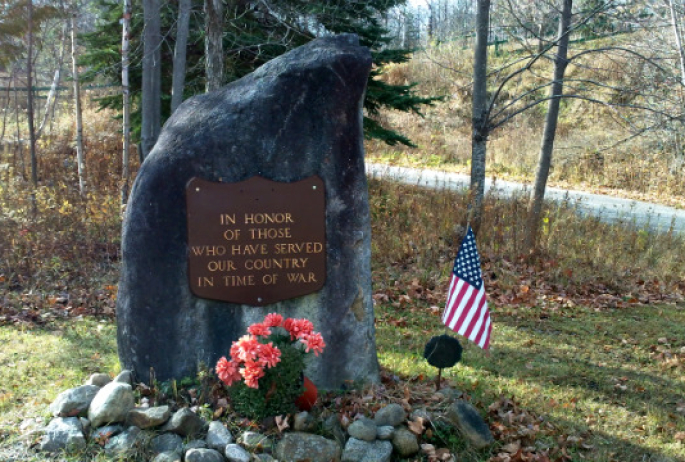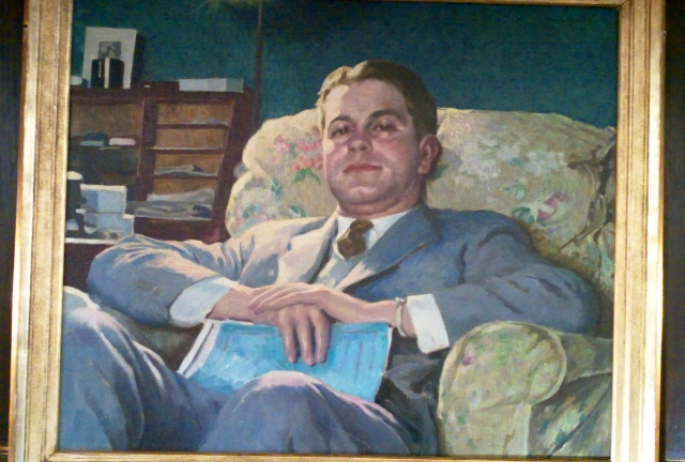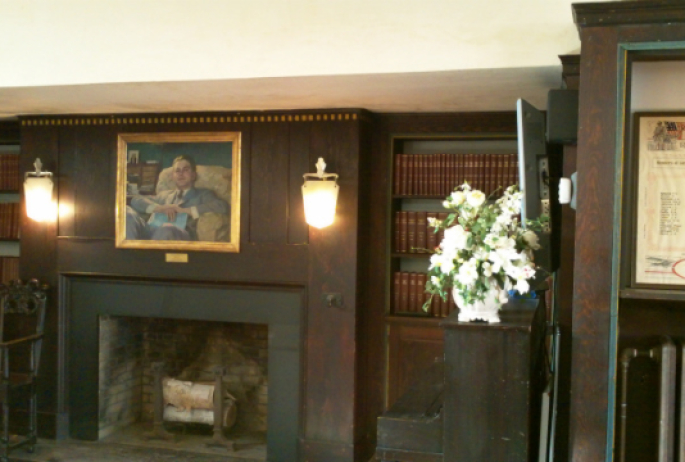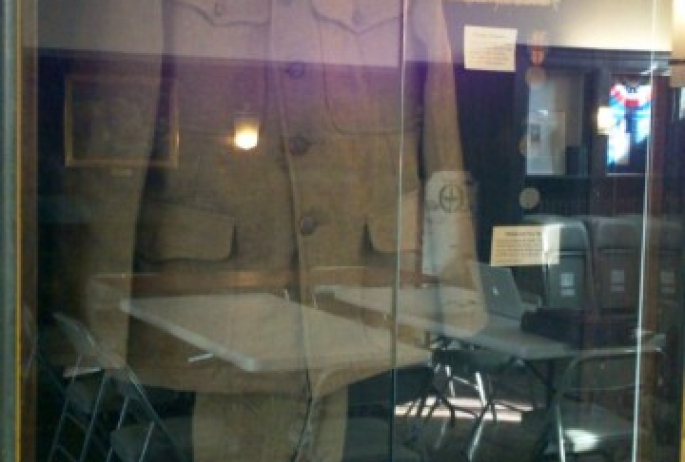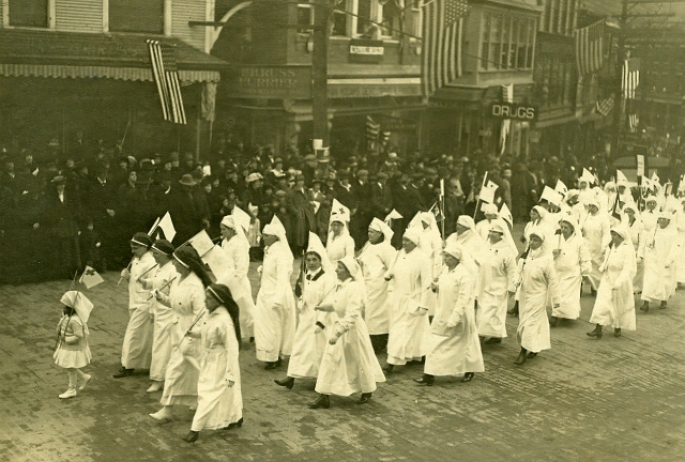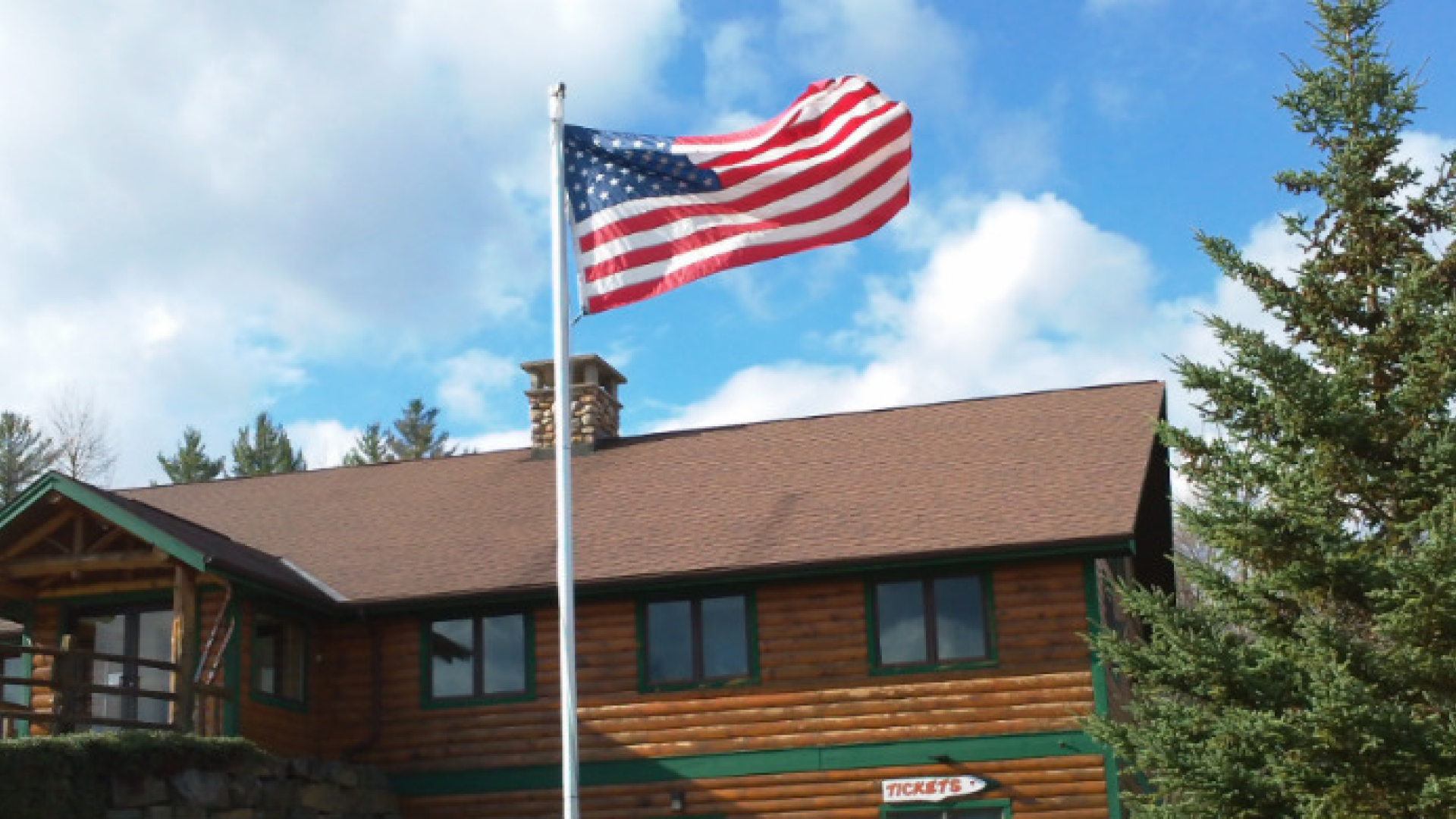Pamela Merritt
November 05, 2014
Saranac Lake has an unusual war memorial. It is the Mount Pisgah Veteran's Memorial Ski Center, located on the mountain at the edge of town. It is a wonderful place to explore this Veteran's Day. Even if we can't ski just yet.
At the entrance there is a more traditional monument, a native boulder with a plaque honoring all service members. While Saranac Lake has been sending its children into the services since 1819, there was one conflict which impacted the town out of all proportion to its population.

Shaping the next century
This year marks the 100th Anniversary of the start of the Great War.
World War I began in August of 1914, though the United States was not pulled into the conflict until 1917, a year before it ended. The number of Americans killed or wounded in the conflict was "only" 128,000 -- a small number compared to the deaths of more than nine million combatants and seven million civilians. It was a Great War in terms of its vast horrors and far-reaching effects.
By its end, the empires of Germany, Austria-Hungary, and the Ottomans had collapsed, and Russia lost most of its western territories. The map of Europe was almost completely redrawn. The ramifications of the battles, and the aftermath, were to shape the whole of the twentieth century.
Saranac Lake took an outsized role in the conflict because tuberculosis was the leading cause of disability discharges, and these soldiers would often come to Saranac Lake to cure. Conditions in the trenches made the soldiers vulnerable to such opportunistic infections; there was poor food and living conditions, the ever-present stress of combat, and being exposed to toxic gasses.
One of these soldiers was John Baxter Black.

a war on two fronts
John Black had been attending Princeton University with the goal of joining the family business of Ohio Brass Company. Instead, he sailed for France in the spring of 1917. A year later he started his five year cure in Saranac Lake.
While his cure was successful, a visit to Montreal for a final surgery turned tragic due to a surgical infection. He died on May 16, 1923. Grateful for the care given to him in Saranac Lake, his family donated a library addition to Dr. Trudeau's laboratory which was completed in 1928. It was designed by fellow solider and patient Robert McLaughlin, who went on to become a noted architect.
Some of the volumes from the original working medical library are still in residence there, along with Mr. Black's portrait over the fireplace. The John Black Room is now used for lectures, study, and exhibits. Currently, the displays are about The Great War and Saranac Lake.

the conflict touched everyone
Nearby Plattsburgh was the site of an innovative idea: creating a training camp for military officers. The summer of 1915 had a first class of 1,300 men of prominence, including four Roosevelts and the mayor of New York City, attending the special summer military program. This included John Baxter Black in his summers off from Princeton. When the US joined the war, the Plattsburgh Camp had turned out hundreds of officers who were ready to lead.
Out of the twenty five members of 1916's high school graduation class, nine would serve in the war. In 1918, it would be two out of the five boys graduating that year. At the exhibit, the uniform of Elwood Ober (who survived the war and returned home) hangs in a display case, along with his boots, helmet, and the hand-knitted balaclava (or ski mask that fits the whole head) which helped keep him warm in the trenches.

making it personal
A panoramic photo over the room's entrance shows Elwood with his Tank Corps. In the front is a young Dwight David Eisenhower. In the next exhibit case, a March 1919 telegram notes: "ARRIVED IN NEWYORK SAFE SOUND AND SOBER LETTER FOLLOWS RALPH." On the home front, a Saranac Lake women's organization, The Reviewers Club, folded bandages, sewed at the Red Cross, adopted a war orphan, raised funds, and planted a tree in Triangle Park to memorialize Charles Cuminsky, the first hometown soldier to give his life.
The end of armed conflict in 1918 brought many towns back to their pre-war pace, but not in Saranac Lake. The Spanish Flu epidemic of 1918, which killed more than 50 million people worldwide, was especially dangerous to the weakened systems of patients already fighting off one major infection. Thanks to the careful sanitation precautions designed by Saranac Lake's many doctors, the flu's impact was relatively mild compared to other towns of similar size. This occurred in the midst of a massive influx of new patients.
The government health agencies of the time were overwhelmed by the hundreds of veterans, refugees, and immigrants who were diagnosed with tuberculosis. There were so many former solders needing tuberculosis treatment that Sunmount Veterans Administration Hospital was opened in nearby Tupper Lake in 1924.
New York Giants baseball star Christy Mathewson was a war veteran who cured here for five years until his death in 1925. Fellow veteran, songwriter Ernie Burnett, was more fortunate, and went on to marry and settle in the town until his death in 1959. But his songs still live on, from "My Melancholy Baby" to "Georgia Moonlight" and "Steamboat Rag."
Dr. Robert C. Paterson was another victim of the war, though he did not serve. A well-known and highly respected tuberculosis specialist, he was murdered by a mentally disturbed ex-serviceman he had tried to have committed to an asylum for the man's "shell-shocked" condition; what is known now as post-traumatic stress disorder, or PTSD.
a long-lasting legacy
Of course, there is never really any end to any war when it comes to all the lives it has diverted, the way an earthquake changes the natural course of a river. In addition to the Mount Pisgah recreational center, Saranac Lake created a memorial of WWI names at the intersection of River and Church Streets, and then-NY Governor Franklin D. Roosevelt turned the first sod on the Whiteface Mountain Veteran's Memorial Highway as a "memorial to New York men who served in the world war." It was appropriate for New York to do so; this state had sent the largest numbers of soldiers into the conflict.
By 1919 the men who had developed tuberculosis from their war service, and come to Saranac Lake for their "porch service," numbered over 500. They formed a Legion Post and kept a ceremonial bottle of champagne in the vault of the Adirondack National Bank, which took a place of honor at the dinner table each time the members gave a ceremonial "toast to their departed comrades." They called themselves The Last Man's Club and held their final meeting, their numbers having dwindled to nine, on August 6th, 1968. That is when the ceremonial champagne was uncorked and lost comrades were bidden a final farewell.
They did not forget. That is also our own task, especially on Veteran's Day. To remember, and to honor.
Visit and Stay in Saranac Lake
Come for a visit of your own and explore our historic downtown. Hold your own ceremony in one of our dining establishments or sample the festivities available with our nightlife. See why soldiers came here to cure themselves - sometime a little rest & relaxation in the quiet Adirondack fresh air is just what the doctor ordered, we offer a variety of lodging options for your stay.
